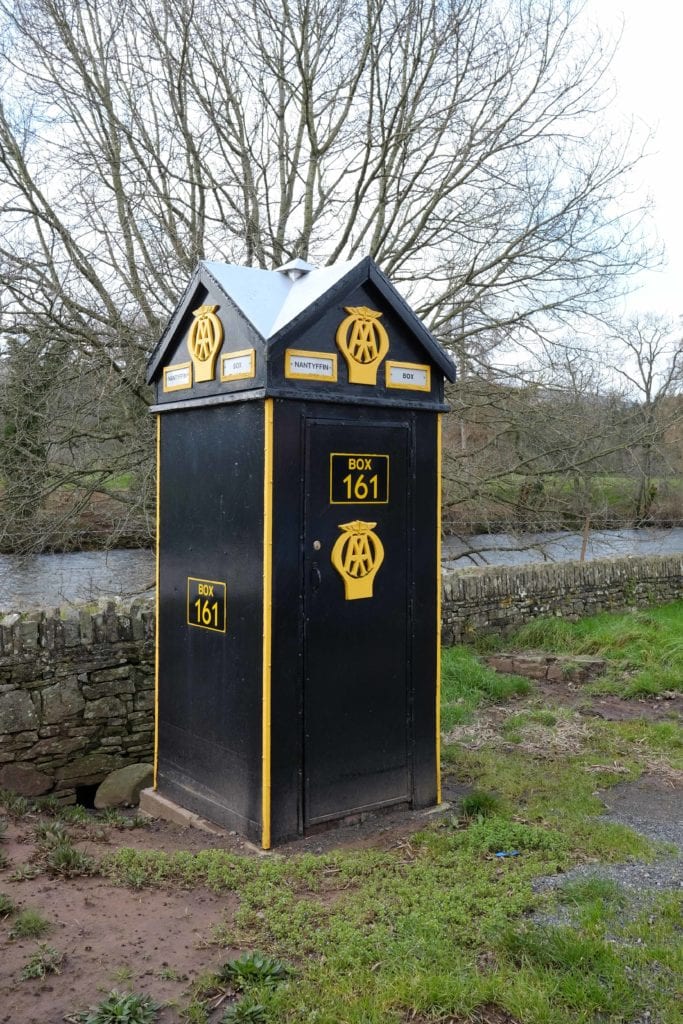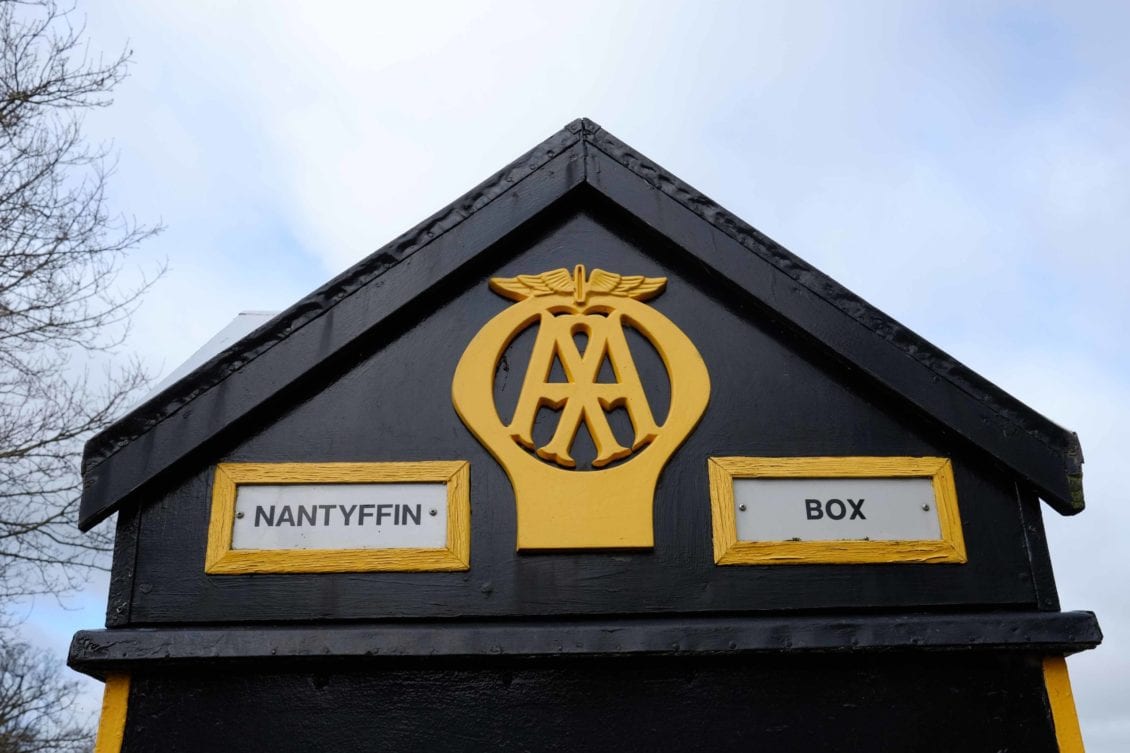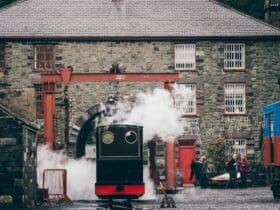Cadw, the Welsh Government’s historic environment service, has today (08 October) put out a call for members of the public to suggest buildings, landmarks and sites of interest for heritage listing and protection in Wales.
The call comes after AA Telephone Box 161 was granted Grade II listed status — an honour bestowed in May 2020, following a recommendation from Brecon-resident, Mr John Bell.
Located on the A40 between Crickhowell and Tretower in Brecon Beacons National Park, the sixty-year-old telephone box is one of only three surviving in their original locations in Wales.


Each year, Cadw carries out on-the-ground surveys and inspections at a wide range of properties across the country — awarding listed status to a select few that hold special value to the nation for their history, architecture and age.
However, to help identify and protect Wales’s secret buildings, objects and hidden gems through the remainder of the year, Cadw is encouraging members of the public to recommend lesser-known landmarks for inspection — just like AA Telephone Box 161.
Thanks to Mr Bell, who alerted Wales’s heritage body to the third unlisted box in January this year, all three of the AA telephone boxes in Wales are now protected by Cadw as Grade II listed buildings — with box 289 located in Devil’s Bridge, Ceredigion, and box 580 on the Llŷn Peninsula.
Built by disabled war veterans at Enham Industries in Hampshire, these numbered boxes were a common sight on the 1950s roadside. They would have contained fire extinguishers, road maps and a telephone to summon help in the event of a breakdown — and were only accessible via a master key given to members of the Automobile Association (AA).
Mr Bell, aged 64, said: “When I moved to the Brecon area eighteen months ago, I was already familiar with AA Box 161 — having accessed it as a member of the AA forty years ago.
“I’ve always had an interest in preserving buildings, so after seeing its strikingly unique design again many years later, I went away to do some research.
“I soon learnt there are only a handful of AA boxes left in their original locations across the country, so when I realised this one hadn’t yet been listed, I wrote to Cadw straight away.
“Following some brief correspondence with Cadw’s Protection and Policy team, I was pleased to see AA Box 161 receive Grade II listed status in the spring. The rest, as they say, is history!”
Dr Chris Stiefvater-Thomas, Cadw’s Listed Building Officer, said “AA Telephone Box 161 and its two sister boxes mark a mobility revolution in post-war Wales.
“When petrol rationing ended in the early 1950s, car ownership increased among Welsh factory workers, steel makers and coal miners — and this resulted in a huge uptake in AA memberships and the arrival of AA Telephone Boxes in Wales, just like box 161.
“We are thrilled to have been able to complete the set of three listed landmarks and would like to pass on our thanks to Mr Bell who alerted us to the location of box 161. Mr Bell’s input proves the value of taking an interest in your local history, with suggestions like this allowing us to conserve and protect hidden gems for generations to come.
“Through the remainder of 2020, we will continue following leads from the public to survey and inspect heritage landmarks. Travel restrictions in place as a result of the pandemic can make this more difficult and buildings that are under threat have to be given priority, but we always look forward to receiving public recommendations of interesting objects, buildings and monuments in Wales — however big or small.”
Deputy Minister for Culture, Sport and Tourism, Lord Elis-Thomas, said: “From telephone boxes to medieval castles and even twentieth century road signs, historic buildings are and always will be, a precious part of Wales’s heritage.
“Contributing to both our identity and sense of place, each listing plays an equally important role in helping us understand our history, as well as promoting a positive image of Wales around the world. Very few buildings from the second half of the twentieth century, such as AA Box 161, have been listed by Cadw to date, so we are particularly keen to list more deserving buildings and hidden gems from this period.
“We would therefore encourage anyone with a site of special historic or architectural importance in mind — from any period — to contact Cadw. By inviting the public’s involvement, we hope to spark their enjoyment in these buildings, all while protecting them for the benefit of future generations.”








Leave a Reply
View Comments